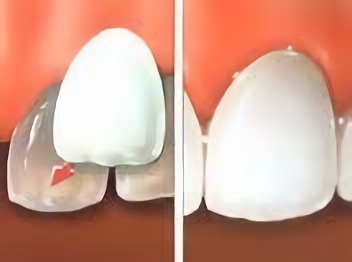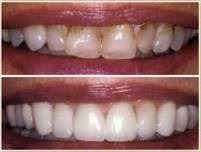Veneers
Veneers
Veneers are partial crowns designed to conserve tooth structure yet enhance the look of your smile.

. . .
What's the Procedure for Getting a Dental Veneer?

The first step involves you explaining to your dentist the result that you are trying to achieve. During this appointment, your dentist will examine your teeth to ensure that dental veneers are appropriate for you. The dentist will also discuss what the procedure will involve, and some of its limitations. He, or she may also take X-rays, and possibly make impressions of your mouth and teeth.
To prepare a tooth for a veneer, your dentist will remove about 1/2 millimetre of enamel from the tooth surface, which is an amount nearly equal to the thickness of the veneer that will be added to the tooth’s surface. Before trimming off this enamel, you and your dentist will decide the appropriate action for a local anesthetic to numb the area.
Next, your dentist will make a model, or impression of your tooth. This model is sent out to a dental laboratory, which in-turn constructs your veneer. It normally takes 1 – 2 weeks for your dentist to receive the veneers back from the laboratory. For very unsightly teeth, temporary dental veneers can be placed at an additional cost.

Before the dental veneer is permanently cemented to your tooth, the dentist will temporarily place it on your tooth to examine its fit and color. He, or she will repeatedly remove, and trim the veneer as needed to achieve the proper fit; the veneer color can be adjusted with the shade of the cement that is going to be used.
Next, to prepare your tooth to receive the veneer, your tooth will be cleaned, polished, and etched. This prepares tooth to allow for a strong bonding process. A special cement is applied to the veneer, and the veneer is then placed on your tooth. Once properly position on the tooth, your dentist will apply a special light beam to the dental veneer, which activates chemicals in the cement, causing it to harden, and cure very quickly.
